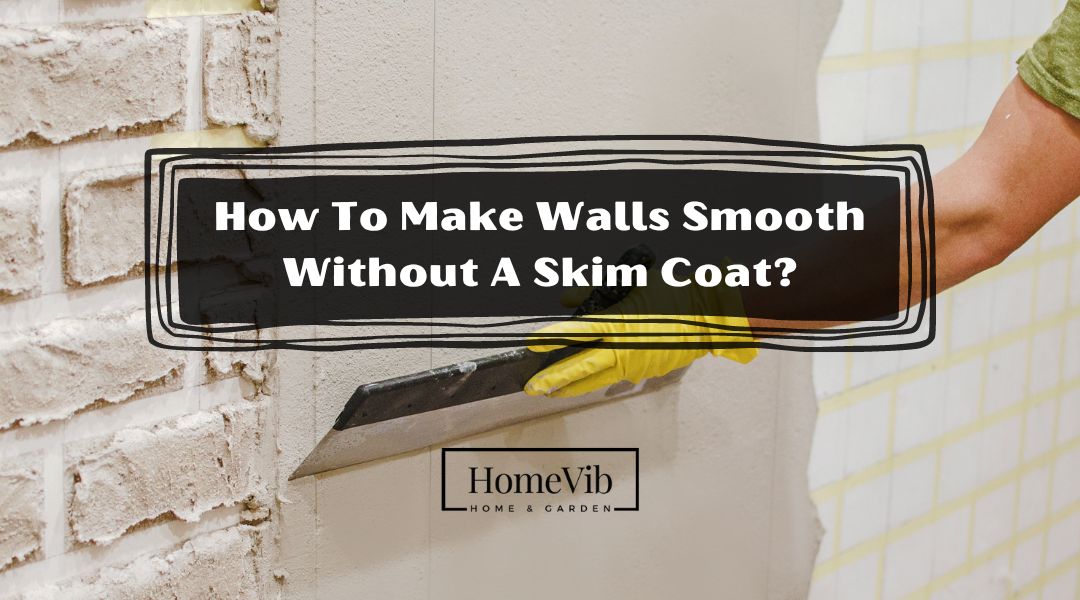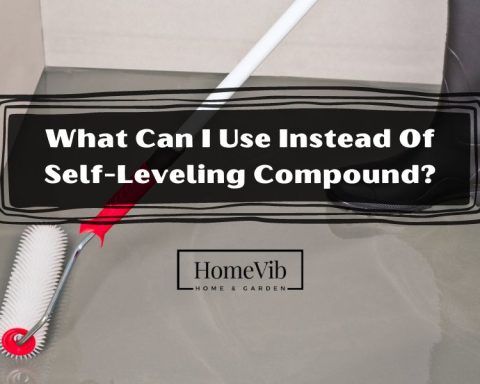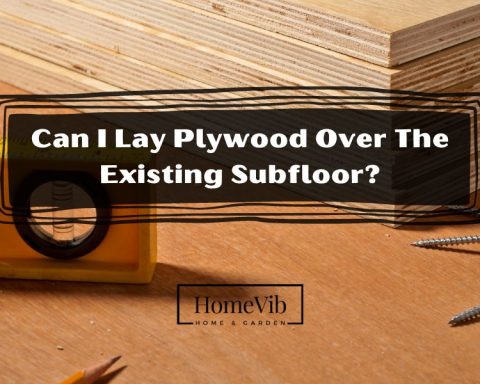To make your walls smooth without using a Skim Coat, you have to put a thin layer of joint compound on your wall, spread it evenly using a trowel or putty knife, and sand it for better texture. Keep on doing this until you achieve the proper smoothness your wall must look like.
Is It Necessary To Skim Coat?
Skim coats bring out the required levelness and precision of the wall surface that are damaged and repaired. It has a thin layer of joint drywall compound, also known as mud. This is often utilized as a typical home improvement remedy with a thin layer of joint compound.
With the application of a finishing plaster as a layer, you can cover up wall imperfections and intentionally apply wall texture. The skim coating will make the upper parts of your walls, especially those with a light source, more glossy.
Although this is desirable in many areas, Skim coats are not always necessary. This is a critical and time-consuming process.
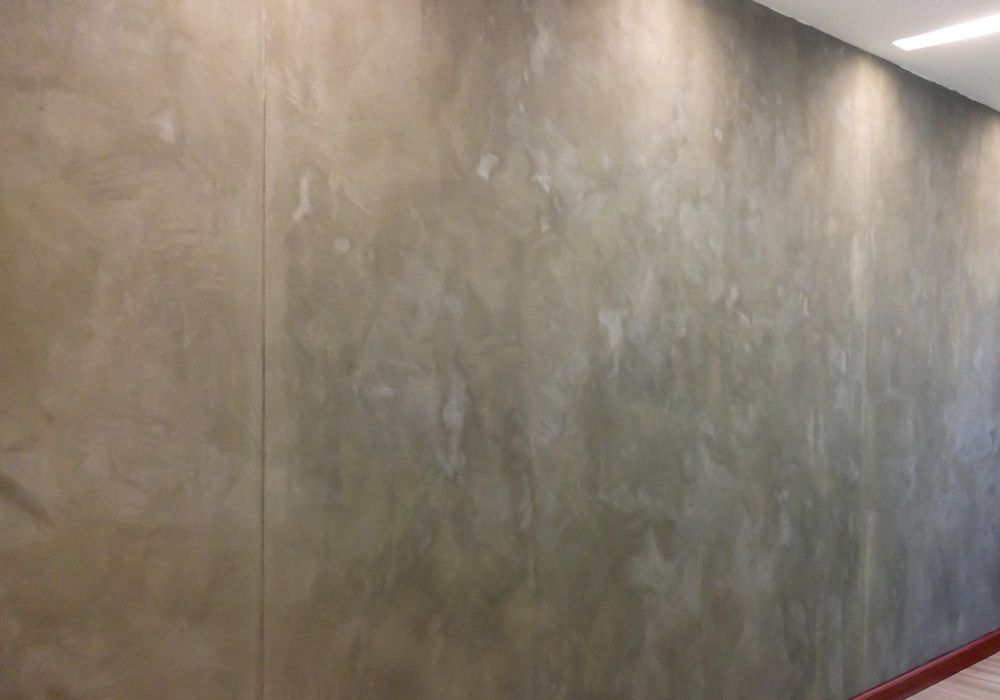
Eight Ways To Make Your Walls Smooth Without A Skim Coat
Is it hard to get your walls even and smooth without using a Skim coat? There are many ways you can use it, depending on the condition of your walls.
1. Filling And Sanding
Filler and sandpaper can be the best duo. Since you only fill the marks and dents, you must hold the trowel at a steep angle until you have already covered all the scuffs and trenches.
You will know if you have put enough filler if there are no visible bumps and when you feel it’s filled perfectly. Then, let it set for sanding.
Sanding is vital in smoothening your walls and making them fit for painting. Sand the walls in lanes using sandpaper.
You can use a pole sander for better results. It is a clamp that holds screens and abrasive papers for standing up.
Drywall Sander for Home Improvement
2. Wall Lining Paper (Wall Liner)
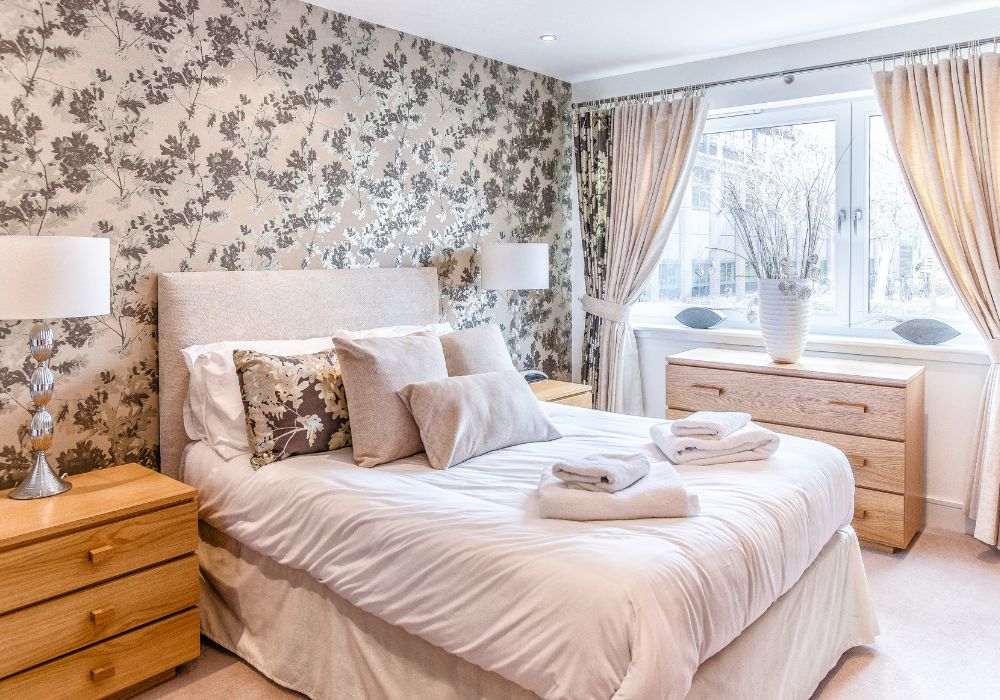
A lining paper is elementary to apply; it can be embossed, flat, or woodchip lining paper.
Before using this, make sure your walls do not have any scuffs or marks that can show through the wall liner, regardless of its thickness. Then, apply it on the corner and follow the wall’s structure.
Overlap the lining paper by about 3 millimeters for shrinkage. After drying up the paper liner, cut the top and bottom using scissors, and make sure you use a regular wallpaper paste when blending it on the wall.
Smooth lining paper with a filler can make your walls cleaner and polished. However, any unwanted excess, cracks, humps, and pits can show through the lining paper; therefore, make sure to do this process precisely and accurately.
3. Wall Plastering
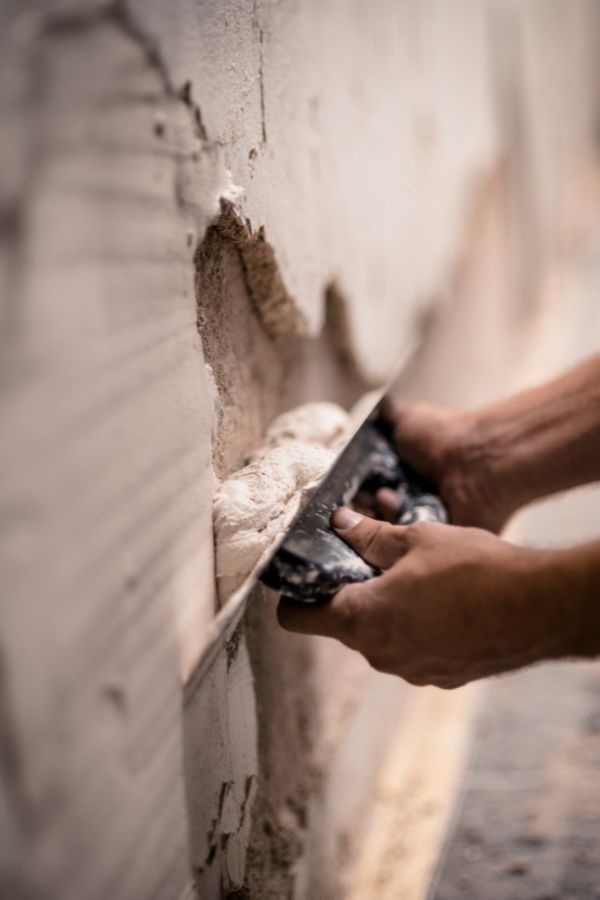
An effective plaster can make your walls smooth. This will prepare your property for wallpapers and painting. Wall plastering needs an application of mortar that is layered over the exposed surface of the house that needs mending. This is done to protect the wall and prepare it for painting and wallpaper.
Wall plasters add preventive layers over the concrete and avoid any leakage, crack, faults, or unwanted shirking that can happen due to atmospheric causes.
Drywall Patch Repair Kit with Scraper
The recommended thickness of layering depends on its coating. For interior surface plaster, the thickness ranges from 6 mm to 12 mm with only a single coat of internal plaster.
The outer surface plaster’s thickness ranges from 18mm to 20mm with two coats. The first layering should be around 10 mm to 12.5 mm, and the final must be 6 mm thick.
There are different types of wall plasters based on ingredients:
-
Gypsum plaster
Gypsum plasters harden by setting back in the water. The most common usage of this wall plaster is combining it with white cementing material.
-
Cement plaster
This wall plaster is a product of combined Portland cement, water, and sand. This can be used both on the outside and inside of masonry.
-
Lime plaster
Lime plaster comprises limestone, water, sand, and non-hydraulic hydrated limestone. The traditional lime plaster usually has reinforced horse hairs pozzolan additives to reduce work time.
-
Clay plaster
With a mixture of sand and clay, clay plasters are eco-friendly. It is non-toxic, organic, durable, and aesthetically pleasing, unlike other paint emitting harmful chemicals like VOCs or Volatile Organic Compounds. This can be a substitute for paint and conventional plaster.
4. Use Joint Compound
Joint compounds are for finishing corner beads, panel joints, fasteners, trims, and skim coats.
This is the best option if you are looking for a convenient way to fix minor blemishes or injured walls. It is designed for easy setup and patching minor damages like bumps, holes, and cracks.
How to use a Jointing Compound?
The process of applying this starts with a pre-mixed joint compound; this is to prevent any mess that can occur while preparing the mixture.
It is helpful if you want to save water, money, and effort. This is 30% lighter than a traditional plaster; you can expect lesser time consumed from measuring the right amount of water for the needed consistency of a joint compound. Uncontrolled and excessive water can dilute the mixture, while an inadequate amount can make the compound chunky and thick.
Next, put a coat of drywall compound over the minor damages. You have to let it dry within one to two days, then sand it for finishes. If you think you have wider walls, consider the type and amount of joint compound to use.
5. Plasterboard
ceilings” src=”https://homevib.com/wp-content/uploads/2023/02/Plasterboards-are-mainly-used-for-partitions-and-ceilings.jpg” alt=”Plasterboards are mainly used for partitions and ceilings” width=”600″ height=”900″ />
Plasterboards are mainly used for partitions and ceilings. Innovative and upgraded plasterboards can smoothen your walls aside from skim coats.
These are made from processed gypsum, which is turned into a board and mostly faced with paper coverings. You can easily install plasterboard on your walls or any surface that needs some shielding and concealing.
There are different kinds of plasterboards. You can choose which plasterboard to use according to its purpose.
-
Standard plasterboard
This is also known as wallboard or drywall. Like a standard, it does not have any specific quality and performance. Standard plasterboard is cheaper and more affordable compared to other plasterboards.
Once installed, the outcome is even enough for decorations. It is considered a “green” building material due to its non-toxic materials.
Use this plasterboard if you have basic requirements like wall partitions, linings, and ceilings or if you need to cover awkward spaces.
-
Acoustic or Soundproof plasterboard
Do you want a soundproofed room? Try an acoustic or soundproof plasterboard to prevent sound waves from passing from your room to another space in your house.
You do not have to deal with any external noises coming outside or avoid some internal noises being heard outside.
This is great for artists with music studios, they can record their videos of music, and it improves the sound quality inside the room.
Living in a loud neighborhood or house can affect our lifestyle, and soundproofing will improve our quality of life.
-
Moisture-resistant plasterboard
Moisture-resistant or waterproof plasterboard has core additives that repel water instead of absorbing it. This is the best in areas with a water industry as it is water resistant.
They are designed to resist moisture and high humidity while having contact with water without being damaged. This can be used in bathrooms, kitchens, and wet rooms.
-
Fire-resistant plasterboard
These types of plasterboard are naturally resistant to fire, which you can spot and notice due to their pinkish color. Fire-resistant plasterboard is, also known as fireproof plasterboard, designed to burn slowly and prevent the quick spread of flames when exposed to fire.
You must think about the rooms and property that can be prone to fire, like your kitchen. The thickness can be specified if it’s for industrial scale.
-
Thermally insulated plasterboard

Thermally insulated plasterboard provides both insulation and dry lining. Like Rockwool, fiberglass, and other insulation materials, this keeps cold air from entering the surface by preventing hot air from escaping.
The insulated plasterboard has a vapor layer to prevent moisture from building on the board and wall. These are easier to install than regular insulation and plasterboards because they are thinner than traditional insulations.
6. Wall Panel
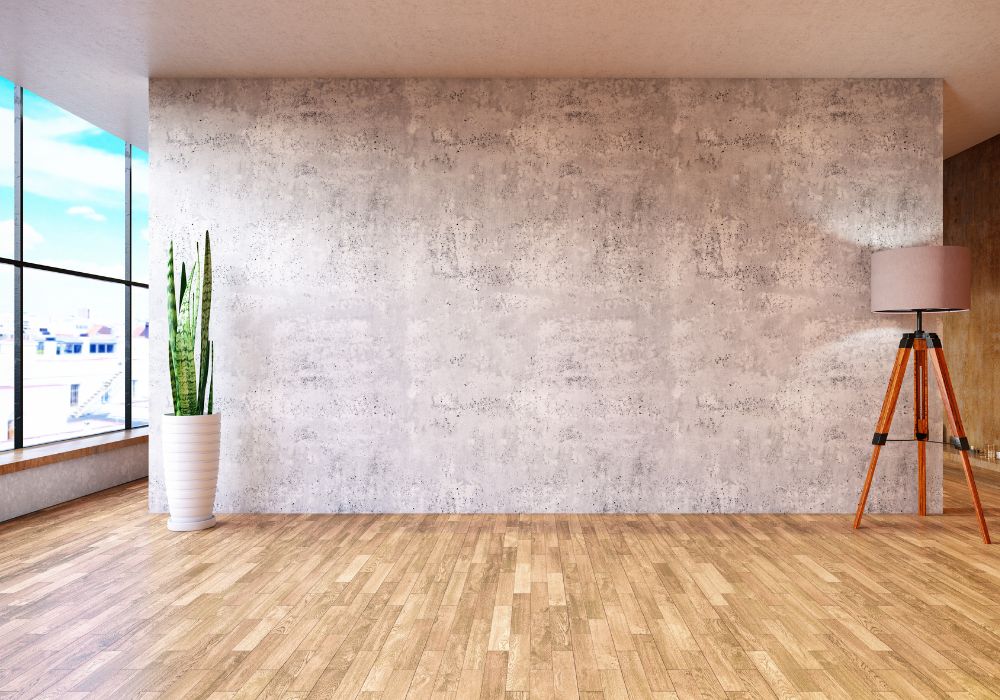
A wall panel is another option if you want an alternative for a skim coat in smoothing your walls. The cheapest and most straightforward way to panel your walls is by using plywood.
And if you want a more decorative but still budget-friendly wall panel, you can use a Medium-density fibreboard or MDF.
It is also called composite wood that was molded by joining hardwood or softwood surplus under high pressure and temperature.
7. Dabbing And Dotting
The dotting and dabbing wall technique involves a plasterboard being attached to a solid brick or blocking the inner skin of a damaged wall by the use of dabs of adhesive or wooden battens.
This is also commonly referred to as drylining. It can place sections of walls, affix boards to bare walls, and effectively smoothen uneven areas while still being inexpensive.
Since it does not require wet mixes, the preparation and drying time is quicker and cleaner.
8. Use Paint

Your damaged and textured walls can be smoothened by painting them. Create a perfect foundation and finish. Paint with high coverage and a thick texture can even out cracks and slightly bumpy surfaces.
They can self-level ridges, bumps, cracks, and damaged areas. Painting over old, uneven walls is usually the easiest option.
If you can not remove existing coatings or patch repair any cracks, you can resort to painting your walls to provide a smooth surface on which to paint.
FAQ
What Is the Difference Between Wallpaper And Lining Paper?
The difference between wallpaper and lining paper is its size and purpose. Wallpaper comes in different styles and designs. These are usually passed on the walls to provide eye-pleasing effects and even out the surface.
On the other hand, a lining paper or wallpaper lining is a wall covering that prepares the surface before decorating it or applying the wallpaper. This is much bigger than the wallpaper.
What Is the Difference Between Skimming And Plastering?
Skimming is the subprocess of plastering. It is typically used to increase a wall’s durability. Both are for renovations and reconstructions.
Another difference between skimming and plastering is its surface area. Plastering is constantly performed on rough walls and new buildings while skimming the surface area is smoother than on old buildings.
What Happens If You Don’t Skim Coat?
You can see some traces of paint in the joint compound and drywall paper when you do not skim-coat. Skim coating can be skipped if an existing plaster wall is already in good condition.
This means the wall should be smooth and without major cracks or chips.

